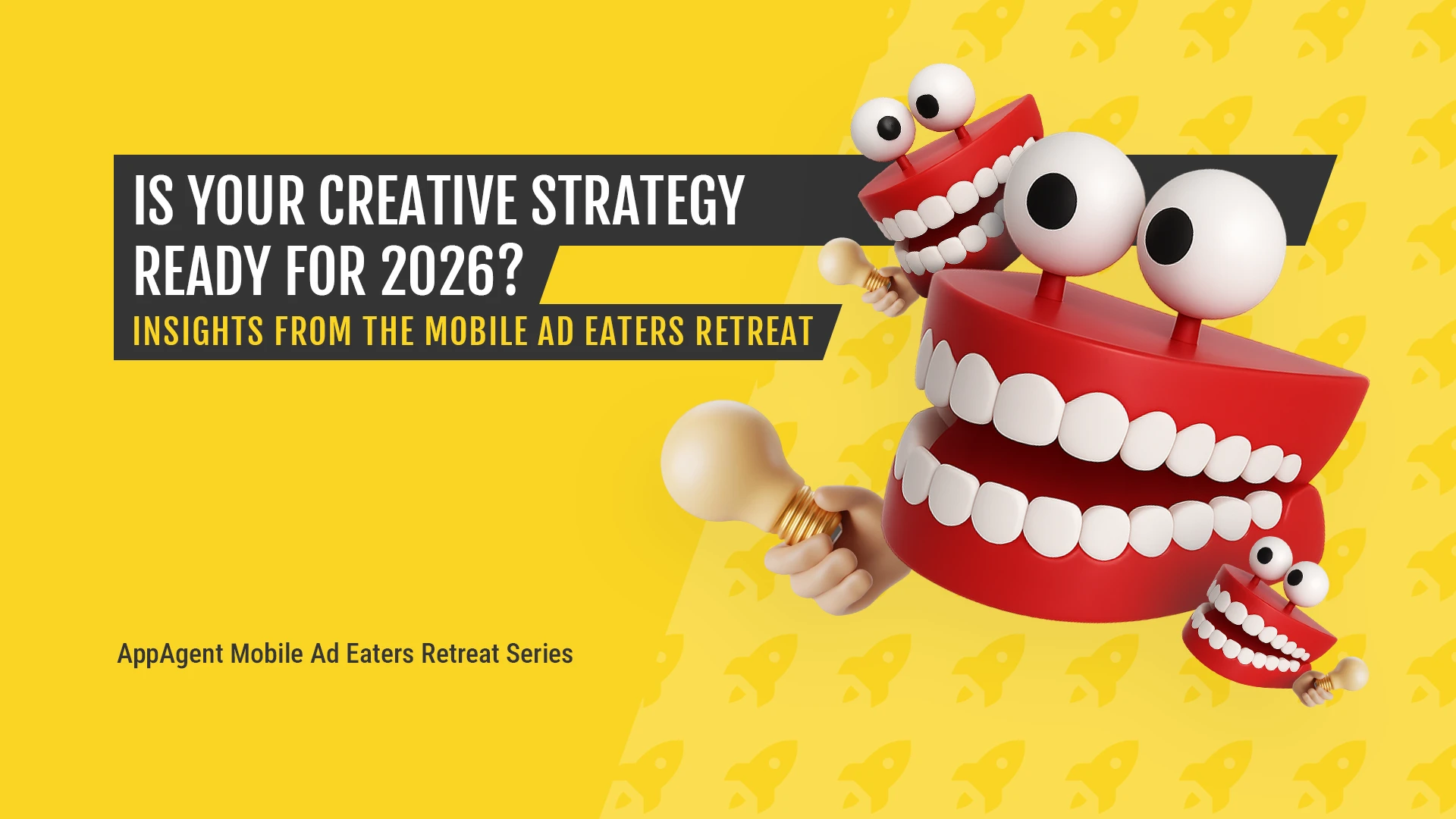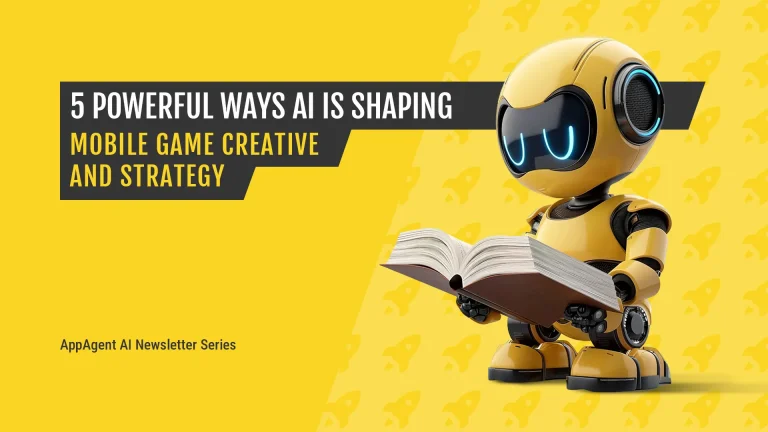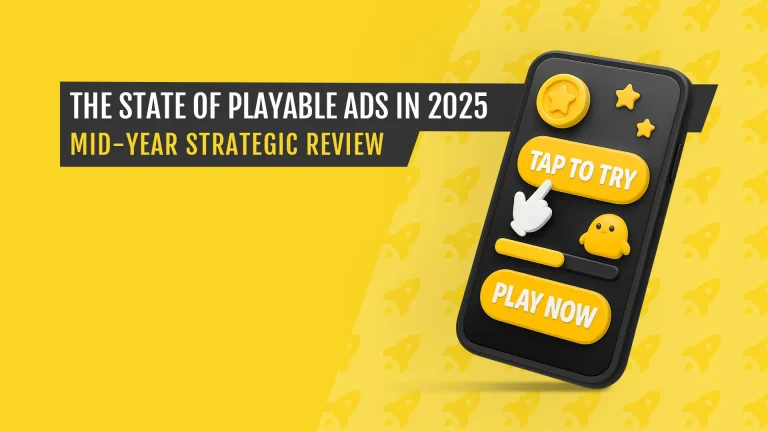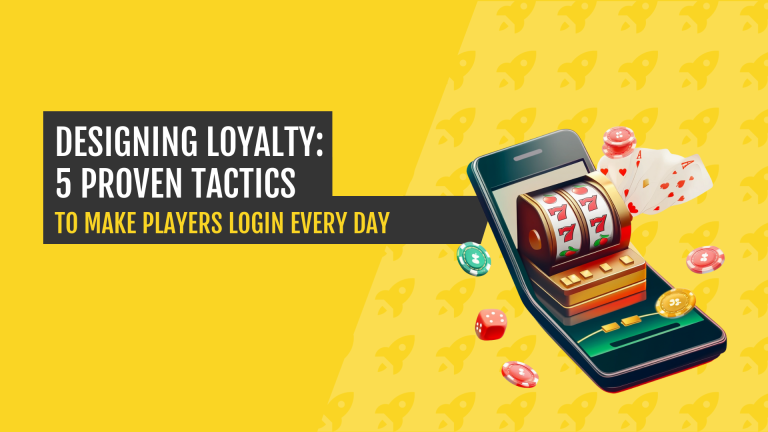Creative Strategy for your mobile game is up and running, but most mobile ads fail. They don’t stand out, chase short-lived trends, or burn out before they scale… But why?
With rising UA costs, shrinking attention spans, and AI reshaping creation and consumption, the mobile gaming landscape is an ever-evolving battleground with a constant demand for fresh content.
A few weeks ago at the Mobile Ad Eaters Retreat in Prague, we sat down with top experts and speakers from leading mobile game studios for focused interviews. We asked them about their daily challenges, their secret sauces, and their predictions for 2026.

The following is a roadmap for your creative evolution, highlighting the 5 critical areas you need to master, packed with actionable lessons distilled directly from those expert voices. Inside, you’ll find trends to watch, strategies to borrow, and priorities that will future-proof your creative approach heading into 2026 (and beyond). Let’s dive in.
Area 1: The Human Core – Creative Strategy & Ideation for 2026
AI might be a fantastic tool to amplify production, but when it comes to the spark – the brilliant idea that truly connects with your audience – that must still come from us. You can’t automate genuine insight.
Here’s what experts told us about where to focus your human brainpower:
Know your audience inside out.
“Knowing your audience’s motivations, desires, and even their pain points isn’t just a nicety; it’s non-negotiable.”
Naor Itzhak, VP Creative at Scopely
This sounds obvious, but it’s where everything truly begins. The big studios aren’t guessing; they’re obsessing over who they’re talking to and that’s the foundation of their success.
Think Supercell, Rovio, King – they’re digging into everything from play tests, focus groups, IP holder insights, player interviews & surveys to YouTube trends and what people are actually saying on Discord and Reddit. It’s essential to map out the real human reasons people play, not just what AI thinks looks cool.
Make them feel something.
“Think of something you truly love, truly enjoy doing, or truly want to see popping up on your feed. Use that feeling and spark to create something that connects.”
Alexandra Pulinets, Senior Creative Strategist at AppAgent

Your feed is probably just as noisy as the next person’s. So, to stand out, your goal should be to tug at a heartstring, spark curiosity, or deliver a burst of pure satisfaction. Whether it’s cuteness overload or an adrenaline rush, emotions are the ultimate signal. And you can use several psychological frameworks to achieve that.
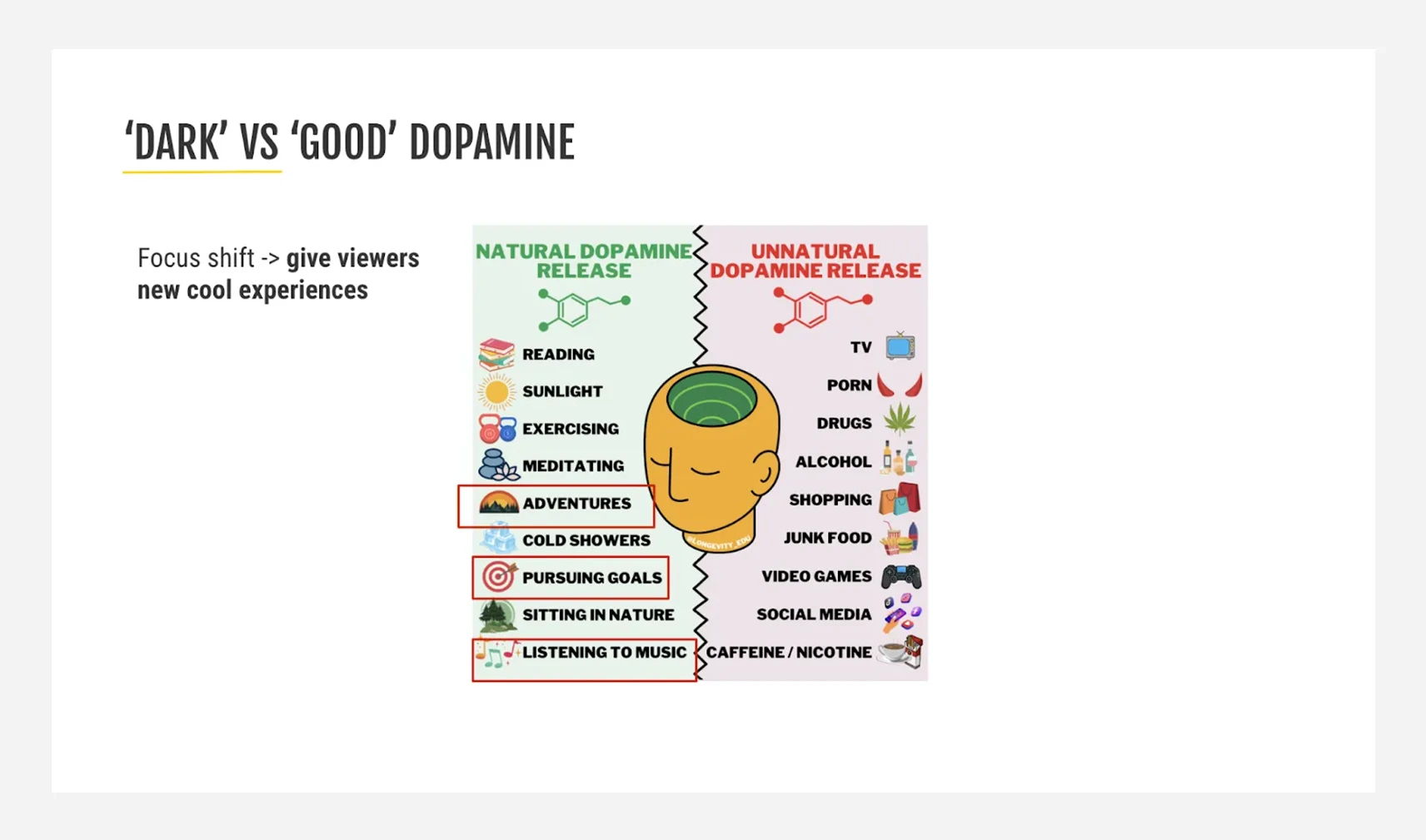
As Naor Itzhak Scopely wisely observed, “The future of creatives is about feeling in the age of no feeling.”
Master the timeless vs. Trendy dance.
It’s not one or the other; it’s both. The professionals are using platforms like TikTok to test out hot trends super fast but at the same time search for timeless concepts.
Mobile growth consultant and Retreat speaker Amanda Lulewicz emphasized the importance of looking beyond your game genre for inspiration: exploring players’ hobbies and shopping trends instead. If something takes off, great – they then bring those winning ideas over to Meta, where they tend to have a much longer lifespan. It’s all about layering trendy hooks onto core, timeless motivations, that’s how you extend ad lifecycles and keep players engaged for the long run.
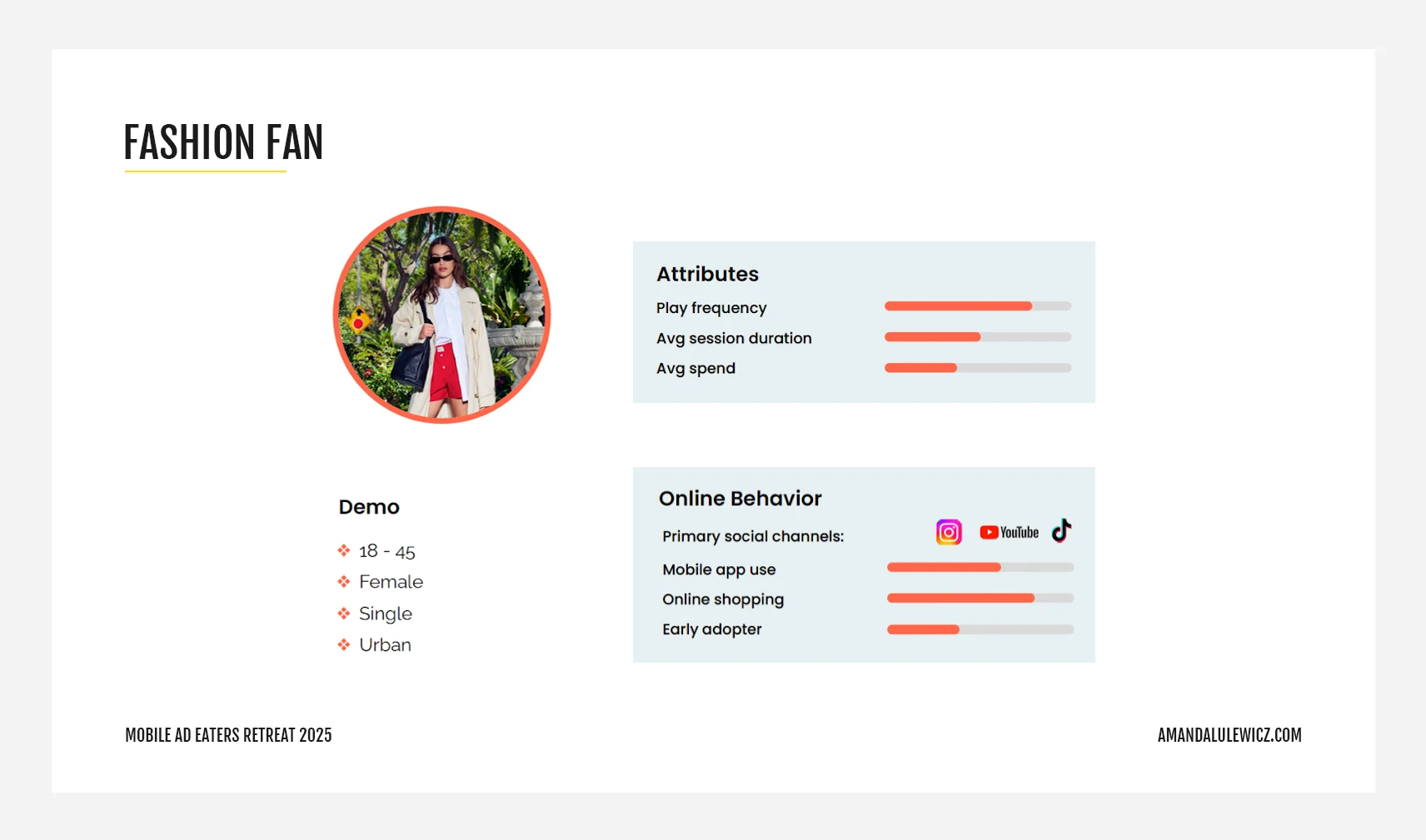
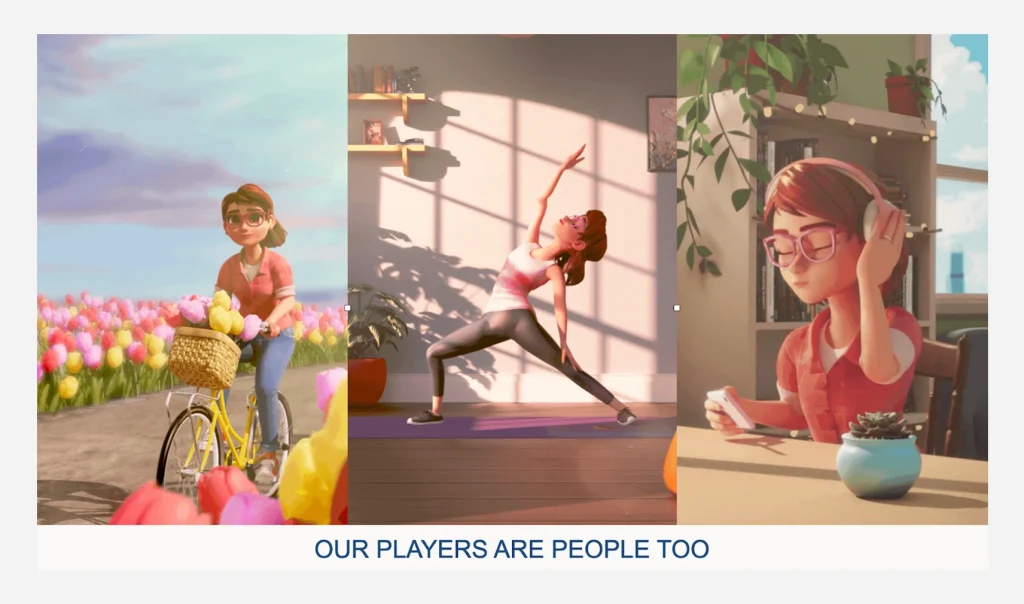
Build strategic variety, not random volume.
“Stop chasing trends blindly; adapt them intelligently to your audience’s specific context.”
Gašper Jager, Creative Director at Ten Square Games

It’s easy to fall into the trap of just making more stuff. But endlessly tweaking tiny variations? That’s a fast track to creative burnout and wasted effort.
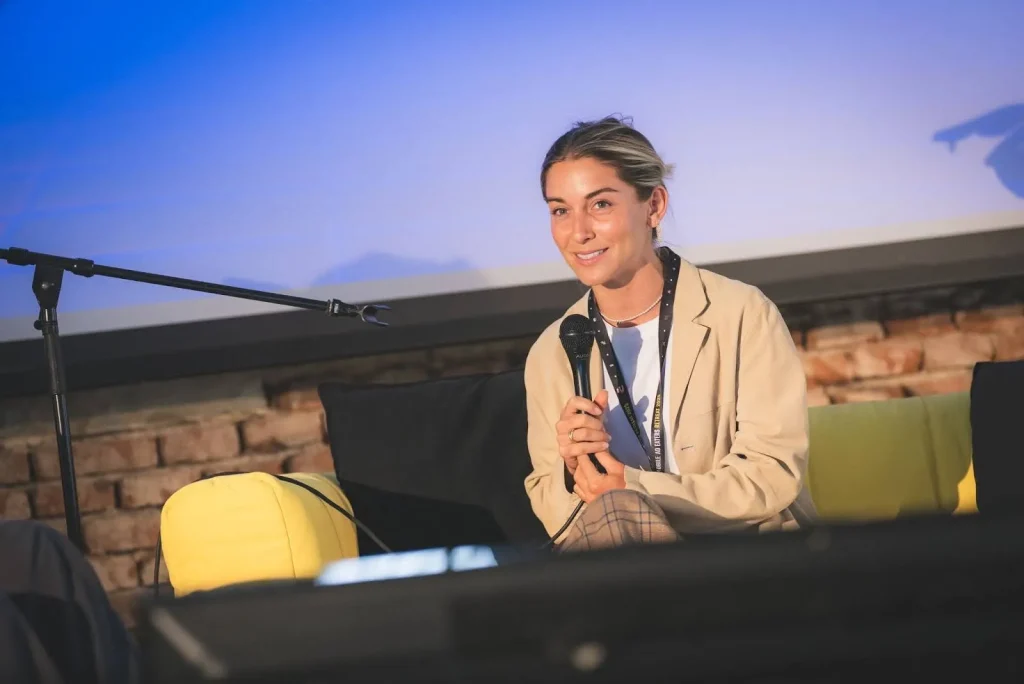
Instead, leading studios build creative systems that allow systematic testing and production scalability. Disney Solitaire’s 5-branch creative tree, as shared by Sky Persin of SuperPlay, is a prime example: visualize distinct strategic directions, then localize characters later to match cultural preferences.
👉 For a deeper dive into developing a core strategy, here are our guides on How to Develop a Creative Strategy for a New Mobile Game and Creative Strategy: From Ideation to Iteration.
Area 2: Smart Production & Execution – The AI-Enhanced Workflow
The balance between speed, polish, and sheer output is a constant tightrope walk with AI playing a clearly defined yet powerful role, and there are some rules for that:
Rule 1: AI = speed, not creative strategy (mostly).
“Parts of production are automated, but AI cannot replace the creative producer, only help improve our work and assist us in passing on tasks.”
Maria Kosiak, EasyBrain & Viktoria Dulub, ex-Homa Games
Undoubtedly, AI can reduce ad production time from over three months to about one week for video ads by assisting at every step: scenario generation, storyboards, and animatics. Studios like Rovio, Pixel Federation, and Scopely use AI for accelerating specific parts like backgrounds, ideation, and rapid prototyping.
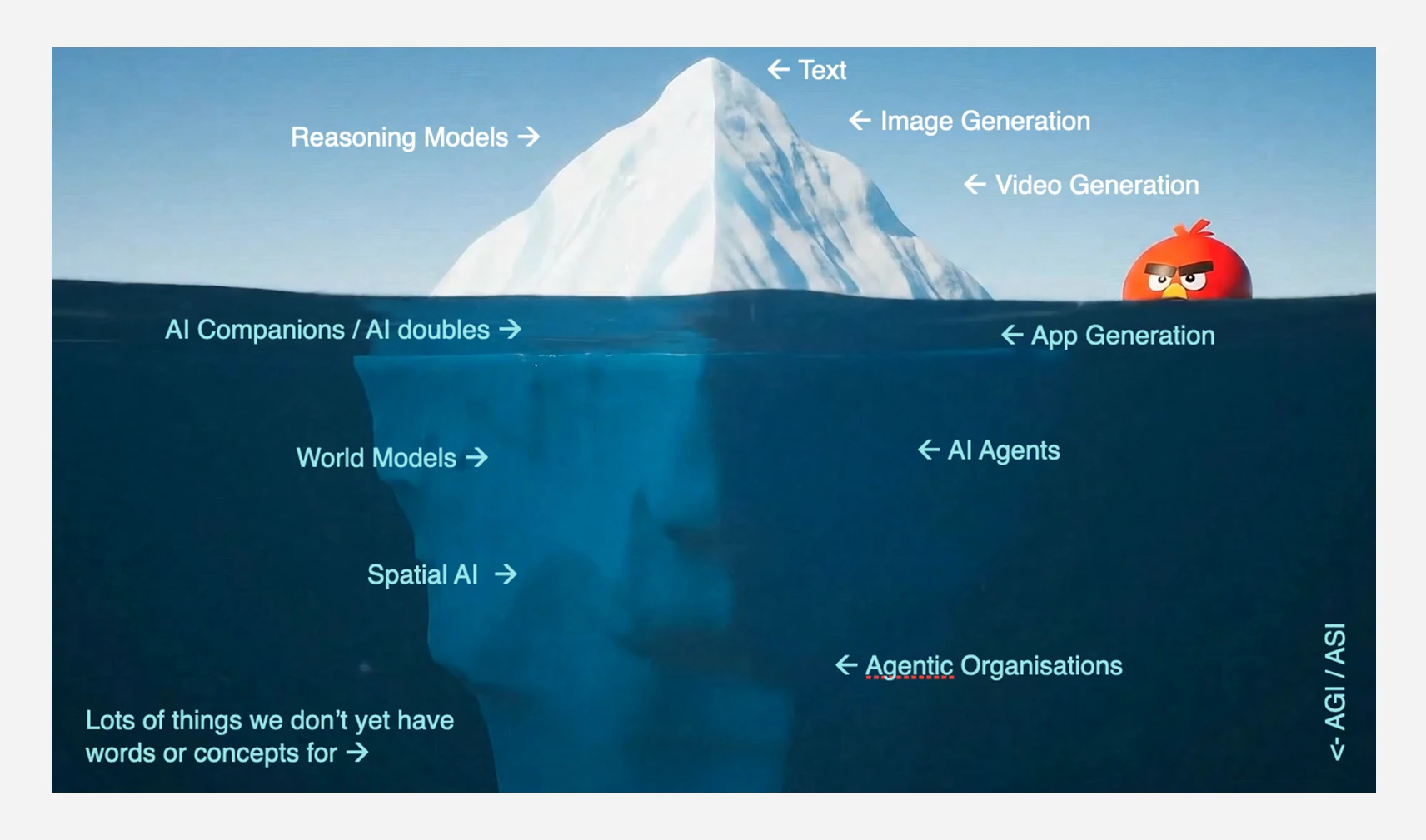
However, that doesn’t mean we should dump it all on AI and replace the human element. Rovio’s mandate is sharp: “If you can say it’s made with AI, it’s not enough.” They avoid AI for core brand assets to ensure the absolute best quality, using it more for secondary priorities.
Another aspect is quality control & IP security: Kenjy Vanitou, Lead Creative Manager of Voodoo, highlighted IP control as a key challenge with AI adoption. To maintain IP security and style consistency, leading studios like Rovio are investing in training models locally with their proprietary datasets.
👉 To explore the practical applications of AI in your workflow in a way that carries you forward, you can check out 5 Powerful Ways AI is Shaping Mobile Game Creative and Strategy
Rule 2: Balance quality & quantity with purpose.
“Not everything needs 4K. Quality should be purpose-driven.”
Volha Charnova, Senior Product Marketing Manager at Tactile Games
When it comes to quality vs. quantity, there’s no universal truth here; the answer depends entirely on your game’s genre, lifecycle stage and objectives. Launch phases (think Voodoo with high frequency of new hyper & hybrid casual games being released) demand variety to quickly find winners. Later stages (like for Tactile Games’s Lily’s Garden which is on the market since early 2019) prioritize quality and brand alignment to sustain performance.
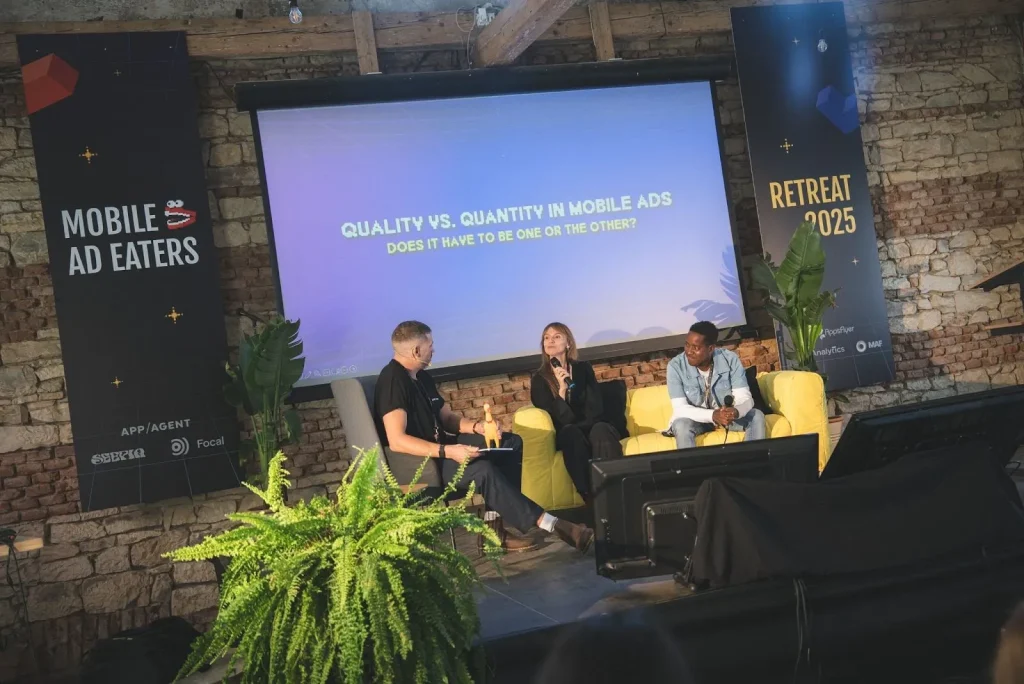
Establish a clear sequence: Variety → Depth → Volume. Start with bold concepts, iterate on early winners for depth, then scale volume. A crucial warning sign for overproduction? Falling win rates, endless micro-tweaks, and flat performance. That’s the moment when you should revisit your creative strategy and test new directions – otherwise, the business could soon run into trouble.
Rule 3: Evolve your creative formats & hooks.
Disturbing hooks and creatives with violent, sexual or gory elements are used more than a little in the industry. But is that the only – or the best – way in the long run? According to our Creative Strategist Alexandra Pulinets, the long term strategy should Instead focus is on proven emotional drivers:
- hyper-satisfying visuals,
- adrenaline-pumping motion,
- undeniable cuteness,
- authentic user-generated content (UGC),
- clear progression narratives,
- and compelling storytelling.

Alex wrote a brilliant article on why disturbing ads work and when, if you want to dig deeper.
Juho Juhantalo (Seepia Games) and Dmitry Averkiev (JustPlay) also highlighted that longer videos and playables are trending, with TikTok favoring longer, “talkative” content. However, this is platform-specific, as Amanda Lulewicz confirms: “It’s important to test all formats and durations to find what works best for a given ad network.”
- Hooked: The Secret to Captivating Mobile Video Ads in 4 Seconds
- How to iterate mobile video ads and double the lifetime of your creatives
- Mobile Video Ad Best Practices for Google and Facebook
Area 3: Testing & Learning – The Path to Winners
Your testing process won’t be one-size-fits-all.
“There is no ideal way to test creatives; everyone does it differently.”
Olga Zamisnaia, Co-founder & CEO at Plummy Games
Roughly half of the studios around the table still rely on pre-testing in cheaper GEOs or controlled CPI environments. The other half have abandoned it completely, throwing new concepts straight into live campaigns and letting algorithms decide.
Both approaches work depending on your goals.
If your team values consistency and structured learnings, pre-testing frameworks still make sense.
If you care more about speed and real-world data, it’s often better to test live, even if it’s messier.
Defining a “winner” isn’t as simple as it used to be.
Ask ten UA teams what a winning creative looks like, and you’ll get ten different answers.
For some, it’s pure KPI logic – CPI, IPM, or ROAS. For others, it’s more about relative success: the best ad from a batch, even if it doesn’t perform long-term.
Sometimes a creative can win for too long, which can be a problem. Several teams mentioned their “hero” ads running for years (like the Fishing Clash example) – still profitable, but holding the portfolio back as dependence on a single asset creates vulnerability, inevitably leading to audience fatigue.
For this reason, savvy teams like Ten Square Games sometimes intentionally retire their hero assets. They found that killing a top performer is often what unlocks new directions and better overall results.
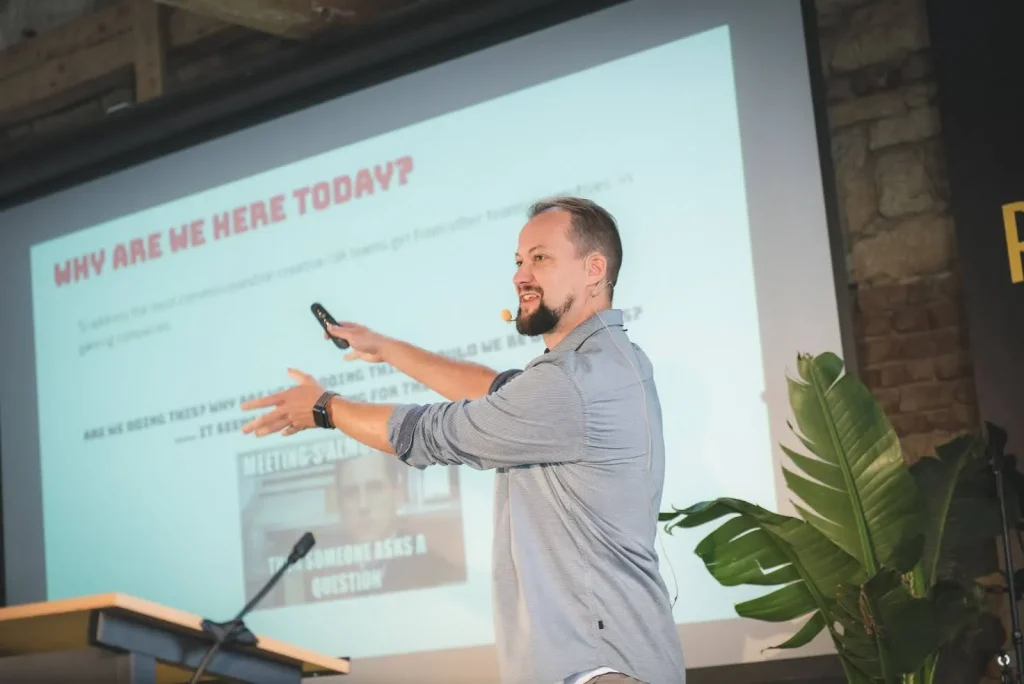
Focus on actionable metrics and testing cadence.
The best-performing studios prioritise testing “intelligently” over just testing more. Their strength lies in cadence and clarity:
- New ideas are tested weekly or bi-weekly, not in random bursts.
- They judge performance by early, actionable metrics (IPM, CTR, early CPI)
- They use consistent frameworks for comparison, so each new batch teaches something real.
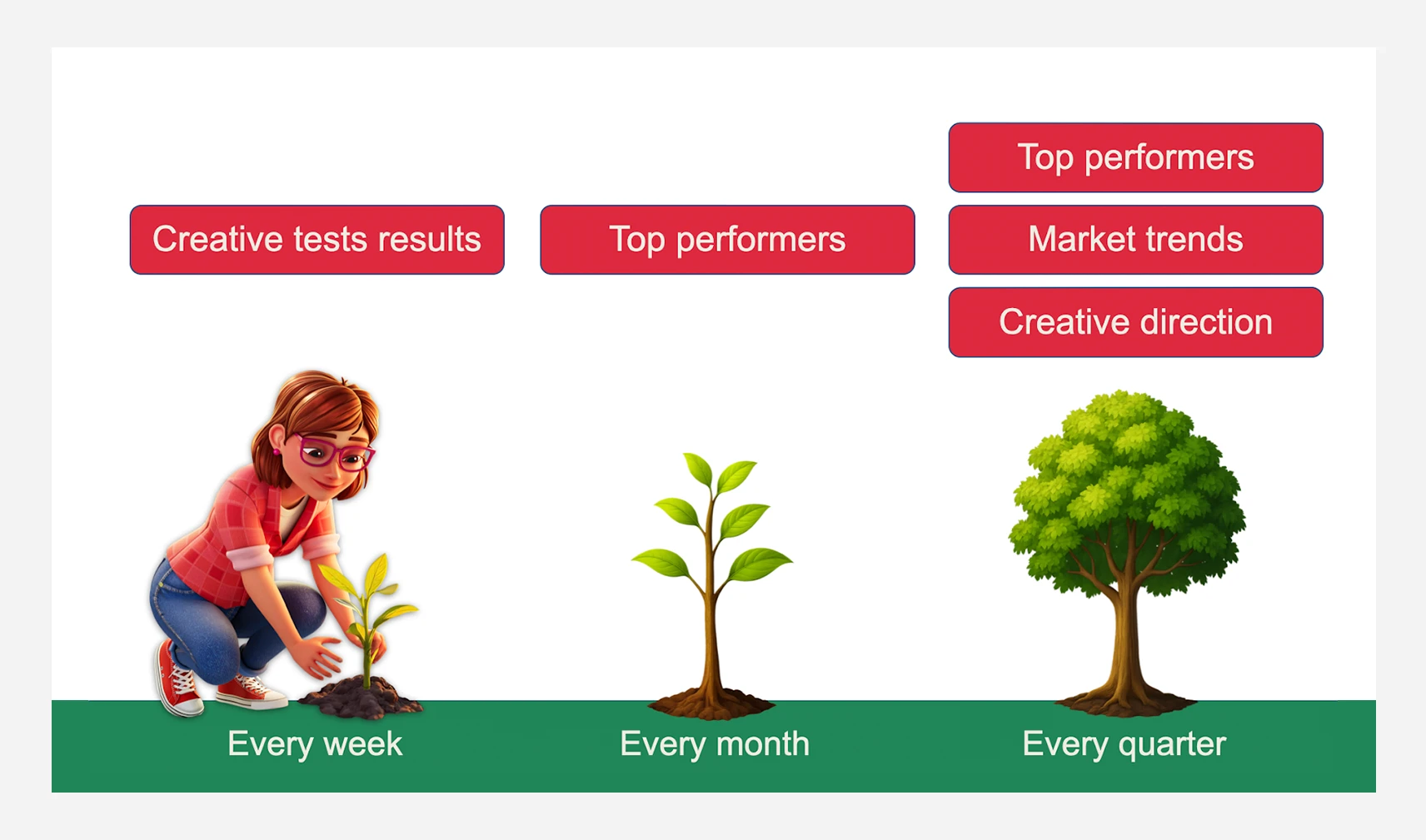
💡 Final thought
Creative testing has evolved from a process of finding “the one” ad that works into a system of continuous exploration. Whether you pre-test or not, kill winners or not, the real advantage comes from being intentional and keeping the feedback loop alive.
Area 4: Team, Process & Culture – The Creative Engine
The best creative strategies falter without the right team, processes, and culture to support them. Leading studios recognize that creative excellence starts within.
Combat creative fatigue within your team.
Burnout can cripple innovation. Successful studios balance structured processes with crucial space for creative freedom.
Ongoing education on the full funnel and UA metrics helps creative teams generate smarter, more effective ideas. To make this work, feedback loops are key – open communication between creative and UA teams, accessible dashboards, and player feedback cycles all help refine concepts.
👉If you’re interested in concrete steps and examples on how to beat creative fatigue, our Senior Growth Manager, Virendra Shekhawat, recently filmed an educational webinar for Singular on the topic.
Culture drives performance.
According to the bureau of labor and statistics, companies with engaged employees outperform those without by 202%, as cited by Amanda Lulewicz. This means frequently recognizing wins, changing environments to spark new ideas, and fostering in-person connections.
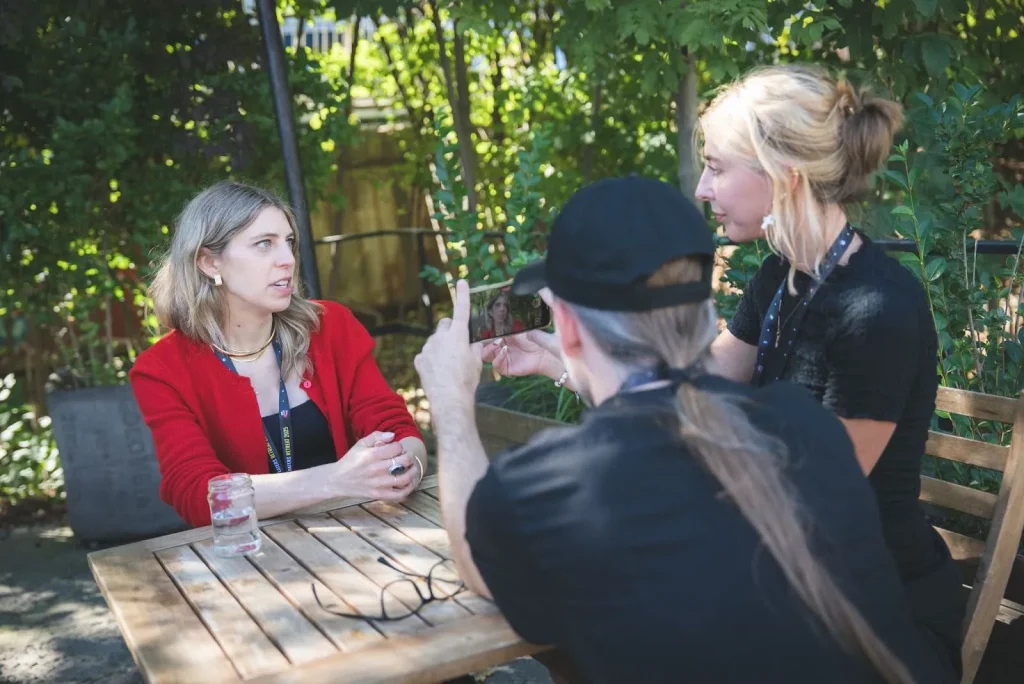
Juho Juhantalo of Seepia found that brainstormings are best with minimum of four people of different backgrounds (usually therefore from various locations and cultures) help to come with breakthrough ideas
Intuition isn’t dead, it’s your secret weapon.
While data is essential, the “creative gut” – a blend of intuition, experience, and cultural awareness – remains invaluable.
Tatu Petersen-Jessen from Rovio noted that understanding the psychology of gamers is key, but sometimes forgotten after working too long in the area.
Experts shared that forward-thinking studios reserve 20-40% of sprint time for out-of-the-box, instinctive ideas that data alone might not generate. For junior creative idea makers, this means giving responsibility, space to solve problems, and constructive feedback, allowing them to build those professional instincts.
Several speakers pointed out that while data should guide our decisions, we shouldn’t hesitate to follow what simply feels right at times, and lean on the creative experience of our team.
Area 5: Brand & Performance – Better Together
For too long, brand and performance have been seen as separate, even opposing forces. The industry’s top players are now realizing that true, sustainable growth comes from their seamless integration.
Also, when everything gets commoditised in the age of AI, brand will be the most important thing in the business.
ROAS is king, but the brand keeps the throne standing.
“You start building your mobile game brand from day one with the decisions you make not only in general identity, but also in gameplay and meta.”
Kai Torstila, Executive Advisor at KTC Creative Agency

A common pitfall highlighted in a roundtable discussion at the event: if performance drops and you’ve ignored brand building, it’s often too late for a quick fix. Brand provides the long-term equity and resilience that performance alone cannot.
For many mobile games, the hero UA ads are the primary brand campaign. Tatu of Rovio underlined this, saying you need to “be your own brand guardian while responsibly using AI – as brand is a promise of quality.”
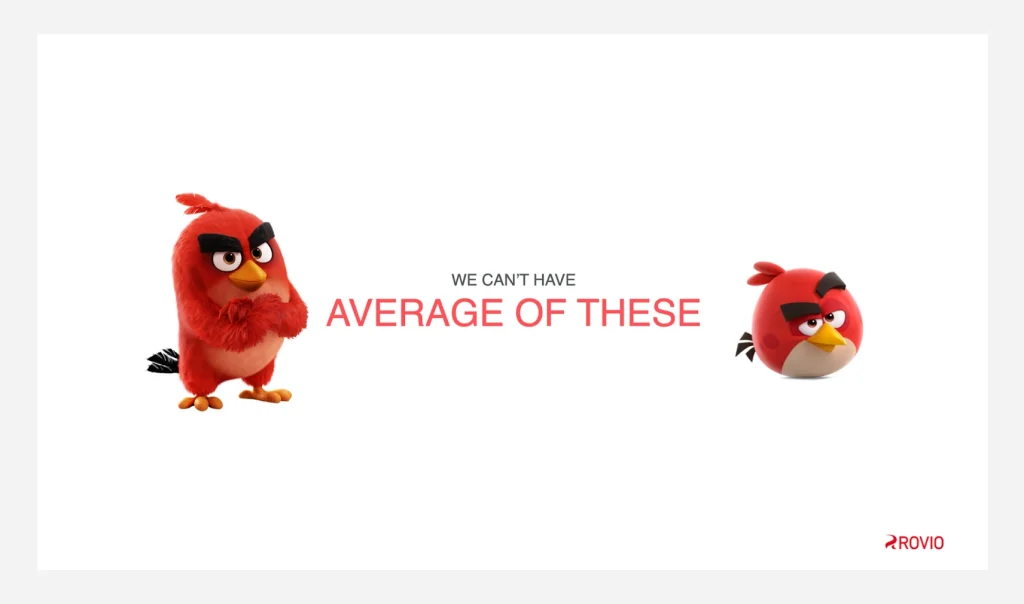
Implement smart brand guides & test impact.
While flexible early on, brand guides become stricter as the game matures.
They should act as a framework for world expansion, not a creative cage. Art Directors often serve as brand guardians, complemented by dedicated Brand Managers in larger studios.
To demonstrate the impact, some studios now test on-brand versus intentionally off-brand creatives to directly measure the performance boost that a strong, consistent brand delivers.
Moshi Blum, an expert Growth Consultant who previously served various CMO roles, also points to “returning users” as a growing audience segment that requires tailored creative strategies – underscoring the importance of nuanced brand communication beyond initial acquisition.
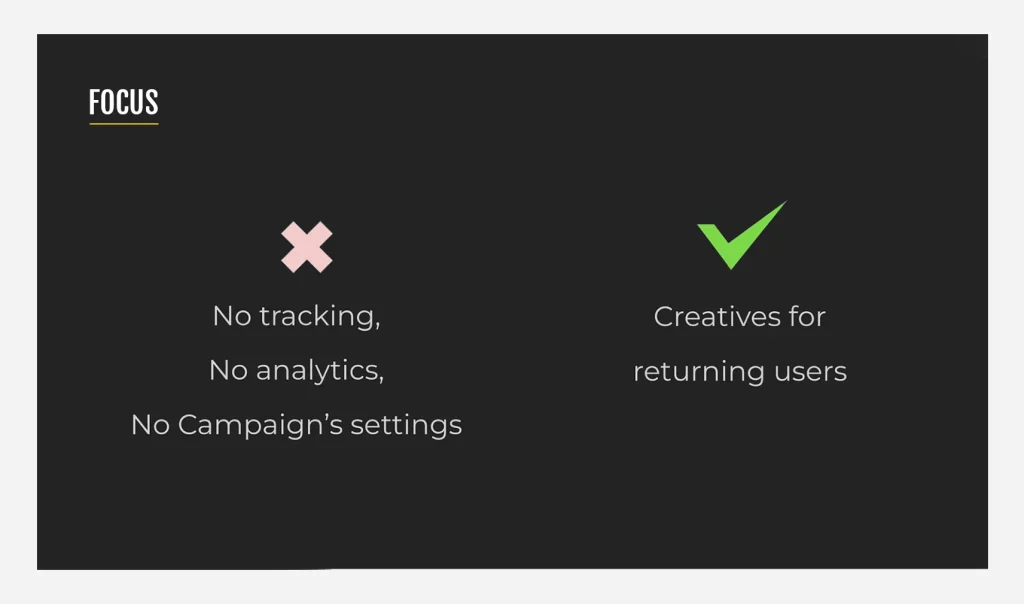
Moshi also recommends building a tracking system that segments returning users by their in-game behavior, identifying shared traits and patterns. This approach helps you more accurately evaluate active UA campaigns, since mature players, typically high spenders, can easily skew results and lead to misleading conclusions.
The 2026 Creative Action Plan: Emerging Shifts & Your Next Steps
Looking ahead, we expect the landscape to continue its rapid transformation. Here are the 3 key shifts identified by industry leaders that will define creative success in 2026:
- AI will flood the pipes with content: distinctiveness and a strong brand identity will become decisive competitive advantages. Generic AI-generated content will drown in the noise, making uniqueness and communication consistency critical.
- Testing sophistication will set aside studios: Winners will build nimble, hybrid frameworks that expertly mix human intuition with algorithmic speed, moving beyond rudimentary A/B testing to predictive analytics and nuanced creative variations.
- Creative teams become strategic growth levers, not production lines: Their culture, structure, and ability to innovate will make or break a studio’s performance, elevating their role beyond mere asset generation to integral business drivers.
Conclusion: The Top 10 Takeaways for Creative Strategy Success
Consider these ten points your immediate action plan to thrive in 2026:
- Creative remains the single biggest growth lever, so invest in a strong communication strategy, don’t just optimize what’s already there.
- Prioritize audience insight + emotional resonance for big creative wins.
- Build creative variety, moving beyond pure volume games. Creative unlocks new audiences!
- Master the quality/quantity dynamic by understanding your game’s stage and objectives.
- Leverage AI for speed, but always anchor strategy and brand in human intelligence.
- Implement purposeful testing focused on win rate, cost-per-winner, and iteration success.
- Cultivate a supportive culture to fuel creative excellence within your team.
- Protect time for intuition and bold concepts – it’s your secret weapon for breakthrough ideas.
- Your lapsed players are worth attention from a creative as well as performance analysis standpoint.
- Creative originality + process discipline are both equally needed to increase creative win rate
The future of mobile gaming creativity belongs to those who embrace both human ingenuity and smart technology.
